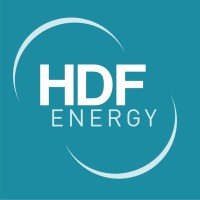Certarus supplies WEC Energy with hydrogen

Certarus Ltd the North American leader in on-road low carbon energy solutions, is pleased to announce that it was selected by one of America’s largest electrical generators and distributors, WEC Energy Group (“WEC”), along with its partners Wärtsilä Corp., Mostardi Platt, the Electric Power Research Institute Inc. (“EPRI”) and engineering and construction company Burns & McDonnell, to supply hydrogen and blending equipment to the A.J. Mihm natural gas-fired power plant near Pelkie, Michigan.
Certarus supported the world’s largest flow rate of hydrogen into a grid-connected reciprocating natural gas engine to date. Certarus engineered and over the course of two weeks, safely supplied and controlled hydrogen at blend rates up to 25% to an 18MW Wärtsilä natural gas engine across multiple engine-load capacities. During the test, the hydrogen blend generated efficient power to support full engine capacity and produced fewer carbon dioxide and methane emissions compared to natural gas.
“Hydrogen has the potential to help companies across a variety of industries improve operational efficiency, significantly reduce carbon emissions, and achieve net-zero goals. We are extremely encouraged by the results of this project and believe it is a key step in advancing the technologies required to meet these carbon reduction targets,” said Richard Cheng, Certarus’ Vice President, Hydrogen. “As the North American leader in providing on-road low carbon energy solutions, Certarus has supported over 20 hydrogen customers to date and can be the partner of choice to safely transport hydrogen anywhere across North America to accelerate hydrogen adoption.”
“We’re very pleased to take a leading role exploring the potential of this technology as we focus on providing customers with affordable, reliable and clean energy,” said Gale Klappa, executive chairman — WEC Energy Group. “As we bring more renewable energy online, we must ensure that we can keep the lights on when the sun is not shining and the wind is not blowing. The results of this project are a strong indicator that these dispatchable units can run on very low- and no-carbon fuels.”
EPRI supported the development of the project and led the technical implementation. EPRI will share a complete analysis of the project in early 2023 to further inform the energy industry on ways to successfully use hydrogen for reciprocating internal combustion engine (“RICE”) power generation to support reducing carbon emissions.
